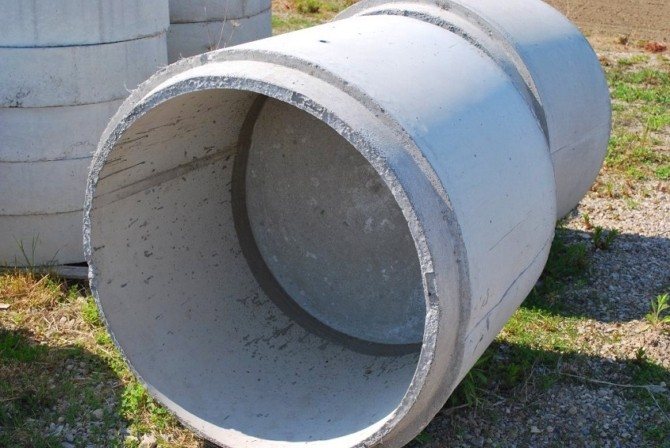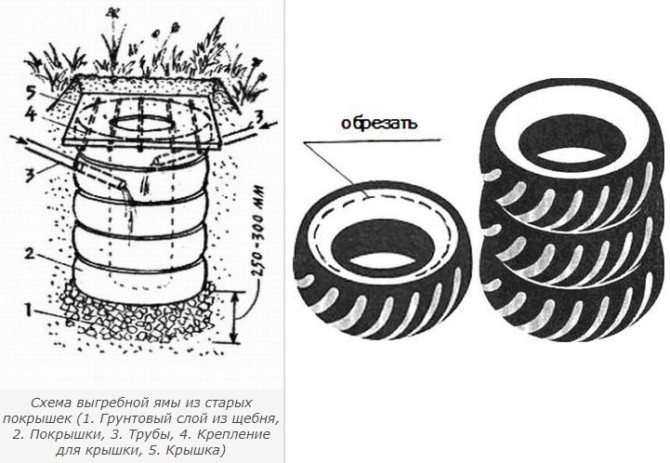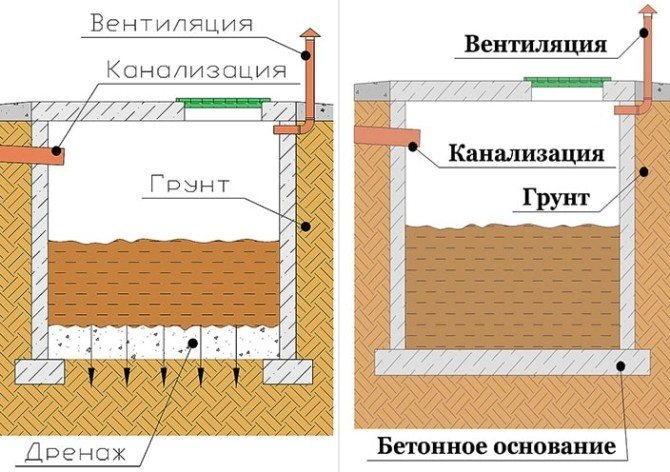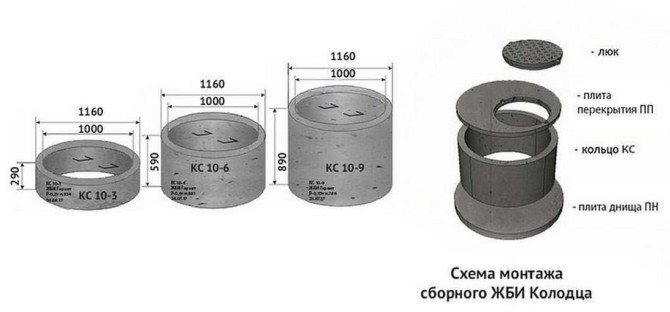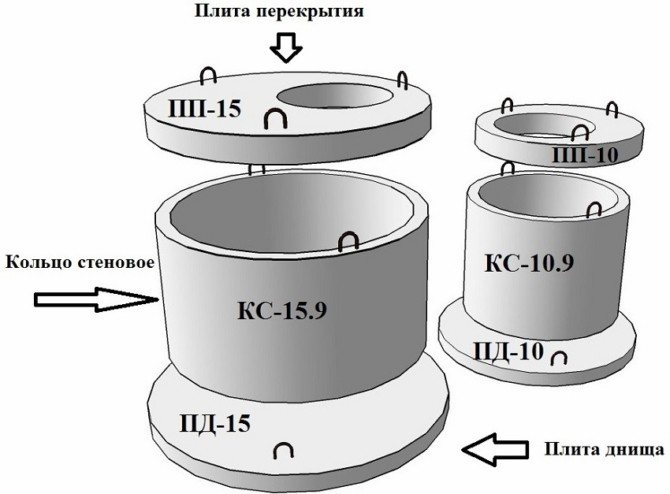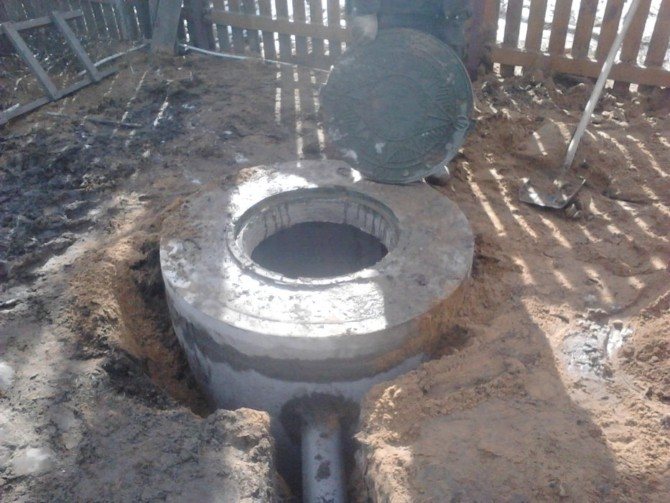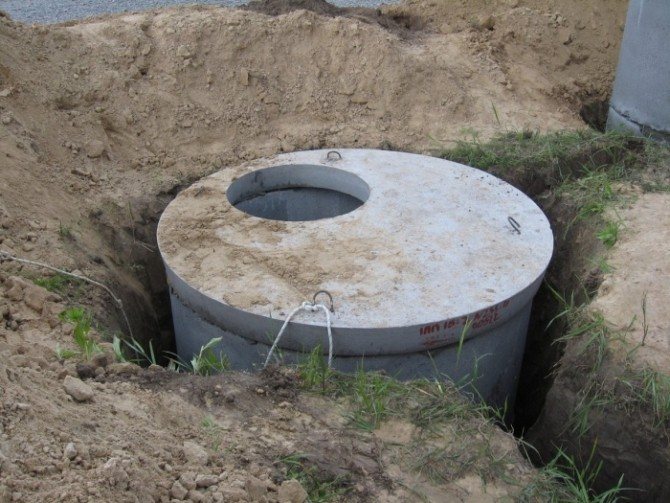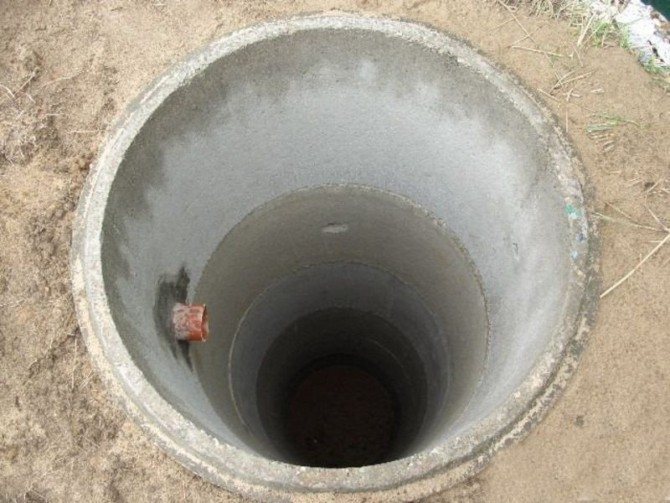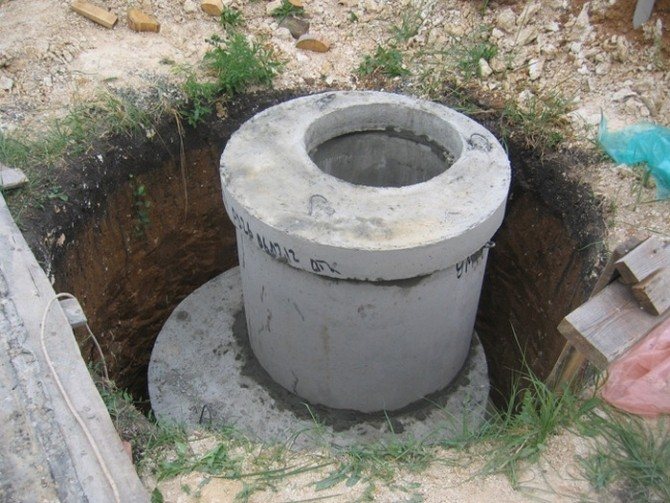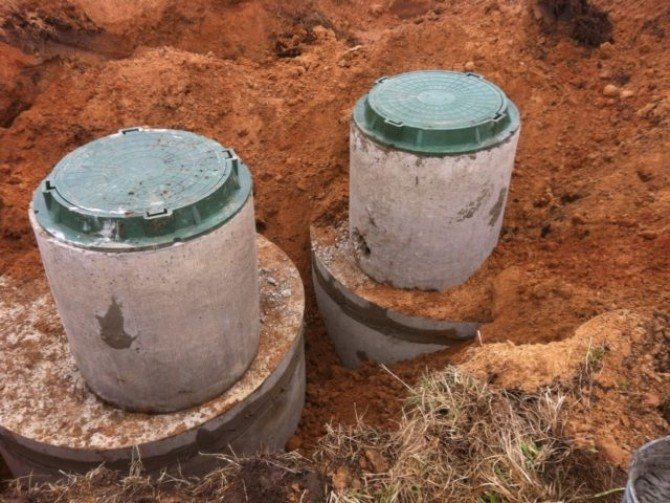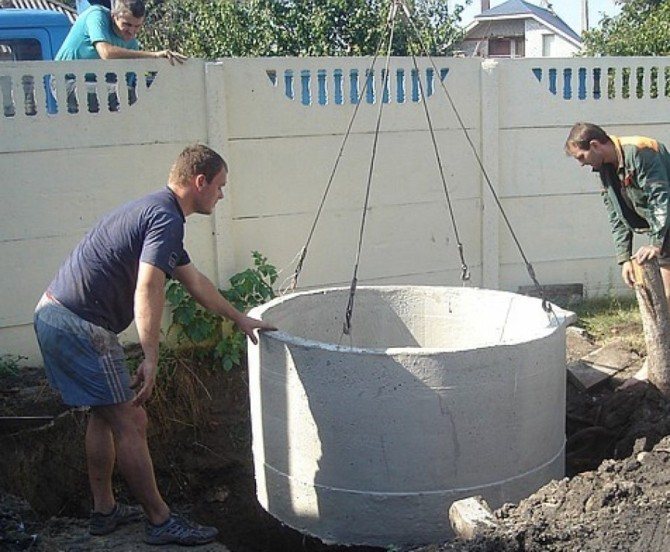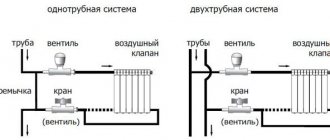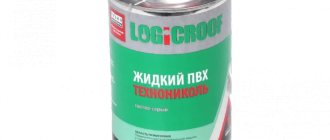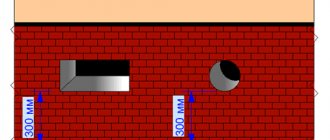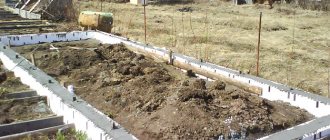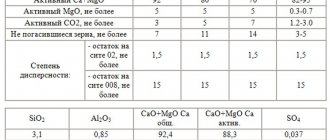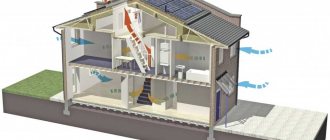The stable operation of the sewer system of a private house in the cold season depends on how to insulate its constituent elements. Next, let's talk in more detail how to equip a cesspool so that it does not freeze in winter. Particular attention should be paid to the top of the well. Waste water does not freeze even in the most severe frosts due to the activity of bacteria that cause fermentation. The upper part of the cesspool is less populated by these bacteria, therefore, those elements of the septic tank that are located in the freezing zone of the soil, and also protrude above the ground, need insulation.
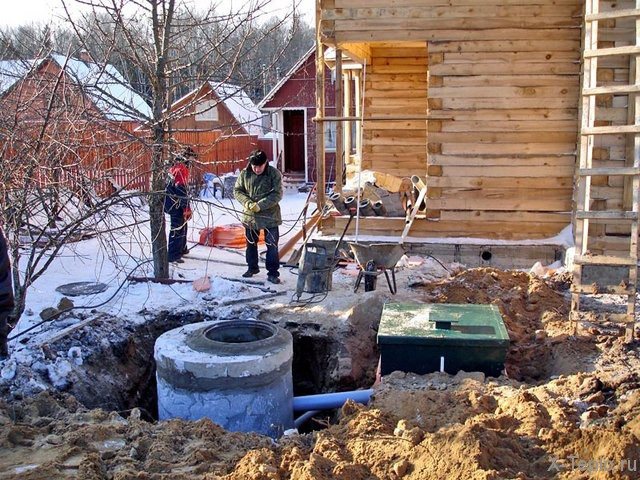
You can insulate the drain pit using the following materials:
- foam plates, thickness not exceeding 100 mm;
- a layer of expanded clay with a thickness of not more than 300 mm;
- mineral wool with waterproofing.
Cesspools with overflow mechanism
Next to the cesspool, another septic tank is dug, deeper. Its walls are reinforced with reinforced concrete rings, and the bottom is left earthen. Through the holes in the upper rings, the pits are connected with overflow pipes. The pipes should be laid at a distance of at least 500 mm from the surface of the soil, that is, below the zone of its freezing. If the region has very harsh winters, then this figure can be increased to 800 mm.
A septic tank from two wells is the optimal solution to the issue of sewage insulation.
How to insulate a cesspool in a private house?
A sewerage system in the courtyard of a private house is a prerequisite, especially in cases where there is no central sewerage system. The correctness of its operation will depend on how you insulate the cesspool for the winter period.
Are you wondering why you need to insulate a cesspool? The fact is that the upper part of the soil often freezes over. The waters that are in the pit are inhabited by bacteria that cause fermentation, so freezing does not occur. The upper part of the pit does not contain these bacteria, so these upper elements of the septic tank freeze through, which disrupts the operation of the entire system.
Insulation of the drain pit with polystyrene
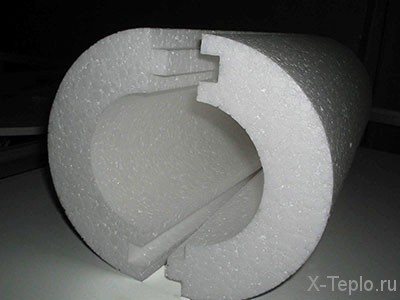

One of the most widespread technologies in the field of thermal insulation of various objects is polystyrene insulation. This method is also suitable for a cesspool. It is especially convenient that today polystyrene can be purchased not only in the form of flat plates, but also in the form of "shells" - half rings. In addition, you can always choose the required thickness and diameter.
Warming begins with the fact that the cesspool is surrounded by a trench with a depth of at least 1.5 meters. Then, pre-prepared polystyrene half rings are installed in this trench. The insulation is attached to the walls of the well using the thorn-groove mechanism, after which the trench is buried. The pit cover must also be carefully insulated.
A significant advantage of this method of warming is that if you need to clean or repair the drain pit, it will not be difficult to dismantle the polystyrene "shell", and return it to its place upon completion of all work.
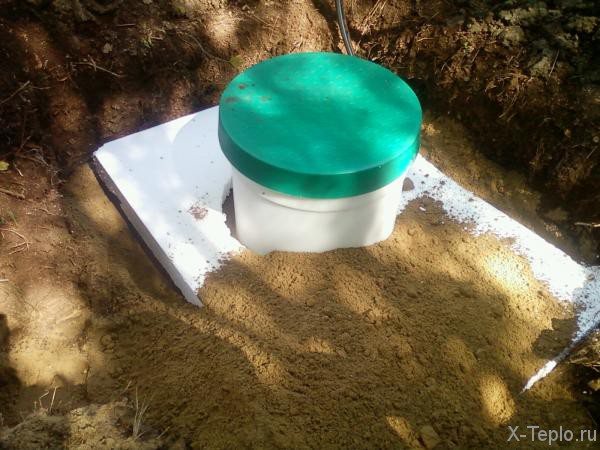

What elements of the sewage system are most vulnerable to frost
First of all, you need to understand the principle of the outdoor sewage system. Liquid household waste, passing through the internal pipeline network, enters the pipe, which is located underground and connects the house with a cesspool. Due to the fact that the outer pipe is mounted at a certain slope, the wastewater is drained into a pit, where it is subjected to a recycling process. Subsequently, RCW are removed by means of sewage equipment.
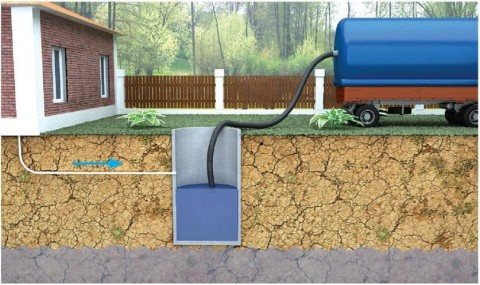

The principle of operation of the external sewage system
Since a significant part of the effluent is water, at sub-zero temperatures they quickly crystallize. All elements of the system located above the level of soil freezing are subject to this effect.
Note. The larger the diameter of the outer pipeline, the less likely it is to form an ice plug in it. However, in particularly harsh conditions, even a large-diameter pipe is not a guarantee of the stable functionality of the sewage system.
With a high intensity of operation of the sewerage system, the local treatment plant fills up quickly. If the cesspool is not insulated, the upper surface of the drains will be covered with an ice crust, which will block the operation of the sewage system throughout the house. Therefore, even at the installation stage, you should take care of reliable thermal insulation of such a structure.
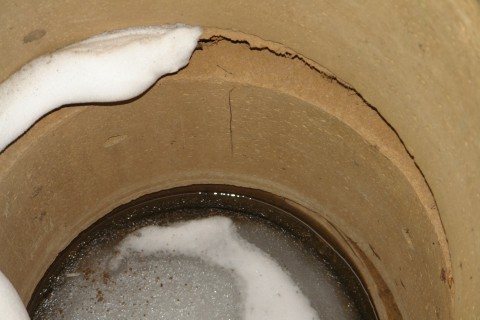

Frozen sewage
Effective insulation of the sewage system: we save not only the pit, but also the pipes from frost
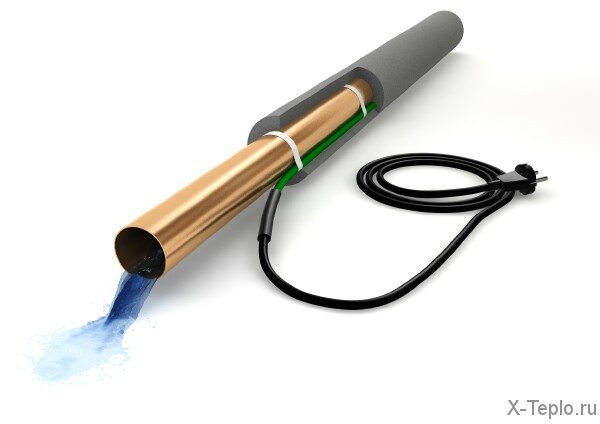

How to insulate not only the drain pit, but also the communications suitable for it, that is, to approach the solution of the problem of thermal insulation of the sewer system in a comprehensive manner? Of course, the ideal solution to the problem of freezing of sewer pipes is to lay them below the freezing level of the soil. If this is not possible, the pipeline should be carefully insulated. Some difficulties always arise with the pipes at the entrance to the room and with those sections of the sewage system that pass through unheated rooms. In these cases, it is advisable to use heating with a 10 W electric cable. The cable is wrapped around the sewer pipe at a certain frequency. When connected to the mains, the wire heats up, heats the pipe, and therefore the liquid in it. Thus, the possibility of freezing the pipe is simply excluded.
It is recommended to use a generator as a backup power source.
disadvantages
The only drawback of this method of insulation is a significant increase in electricity consumption. On the other hand, severe frosts last 1-2 months, and heating up already frozen pipes will cost you much more. In addition, only the most problematic sections of the sewer pipes can be wrapped with an electric wire. Difficulties with protecting pipes insulated in this way from freezing can arise even when there are power outages. In this case, an autonomous generator will save the situation.
Thus, the insulation of the sewer system of a private house should be approached comprehensively. Insulating a cesspool means solving only one of a number of tasks. By taking measures to insulate the sewer pipes, you can be absolutely sure of the stable operation of the entire system even in the most severe frosts.
Why you need to insulate the cesspool
Very often, in the process of arranging the sewer system, the owners do not understand what role the cesspool insulation plays, they miss this point, which then negatively affects the functioning and durability of the structure.
Freezing of the drain tank is the cause of the following problems:
- the inability of the sewer system to do its job;
- overflow of a cesspool with water;
- pouring sewage into the site;
- spreading a fetid odor;
- harm to the environment.
Insulation work is best carried out in the process of arranging the sewer system. If this has not been done, then thermal insulation can be carried out and later, however, you will have to make every effort, and the costs will increase significantly. It is necessary to insulate not only the cesspool itself, but also the drain pipes, because they also freeze at low temperatures.
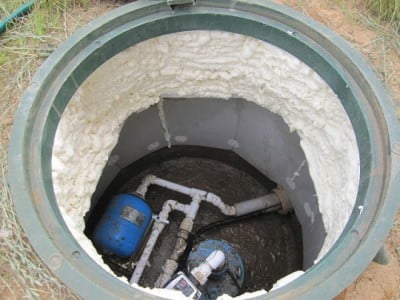

Insulation work in the process of arranging the sewer system
You can hear the opinion that the sewage system does not freeze in the cold season due to the fact that hot liquid enters there, which, moreover, is in constant motion. But in practice, this hypothesis is not confirmed, and those who did not take care of the insulation of the cesspool and pipes are in trouble.
Thermal insulation materials to protect the pumping station
Equipment for a well / well in a country house or in a private house requires thermal insulation using modern materials with increased resistance to moisture. All absorbent materials such as mineral, basalt or glass wool are not suitable in this case. To insulate the pumping station, use:
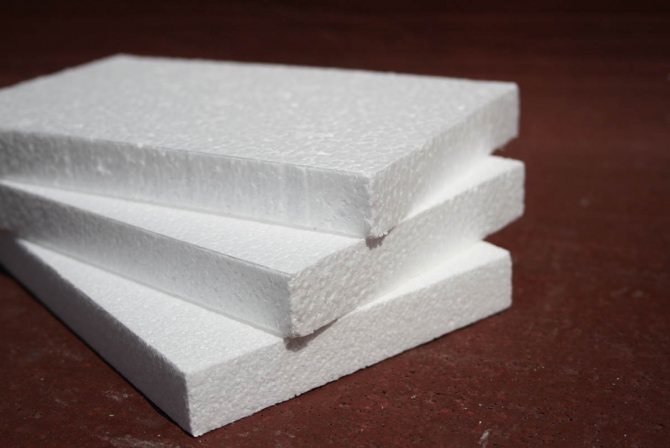

Polyfoam - a material used to insulate a pumping station
- Styrofoam;
- penoplex;
- polyurethane foam.
The use of plate heat-insulating materials resistant to mechanical stress, moisture, decay is most justified. The use of such insulation on the walls and the lid of the water intake pit guarantees stable operation of the pumping station even in severe frosts.
Insulation is used both outside (well, well) and inside (water intake pit when the house is connected to the city water supply system). In either case, the well cover is insulated on both sides.
Cesspool insulation options ↑
The size of the pit for the cesspool must be calculated in such a way that at least a third of the container is located below the soil freezing line. The rest of the structure on the sides and on top can be insulated with various heat-insulating materials, among which the most popular are:
- expanded clay;
- mineral wool;
- expanded polystyrene.
Budgetary insulation with expanded clay ↑
When deciding how to insulate a cesspool in a private house, they usually proceed from the cost of materials. One of the most budgetary options is the use of expanded clay.
For your information. Expanded clay is a porous material that is produced by firing clay and shale. Due to its low weight and excellent thermal insulation properties, it is widely used in various fields of construction.
To insulate the treatment plant, expanded clay is poured between the wall of the structure and the slope of the pit, as well as on top of the floor. To achieve the desired effect, the layer thickness must be at least 200 mm.
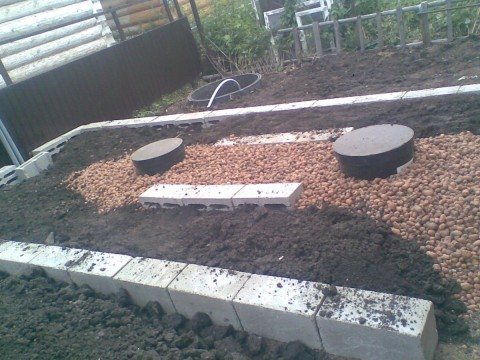

Expanded clay - affordable insulation for sewage treatment plants
Thermal insulation with mineral wool ↑
The use of mineral wool as an insulating material can also be attributed to the budget options, although this insulation is somewhat more expensive than expanded clay. The advantage of mineral wool is its low thermal conductivity with a small layer thickness.
Note. Dust from mineral wool can irritate mucous membranes and skin, therefore, protective clothing should be used during installation.
Having decided to insulate the cesspool with this material, one should definitely take into account one of its features. The fact is that the thermal conductivity of mineral wool increases significantly if it is exposed to moisture. Therefore, after laying the mineral wool on top, it is necessary to place a layer of waterproofing, for example, from roofing material.
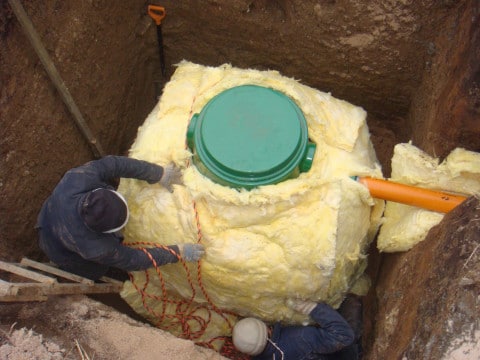

Insulation of the cesspool with mineral wool
The use of expanded polystyrene ↑
Expanded polystyrene (or foam) is a heat insulator with one of the lowest thermal conductivity values. If for mineral wool this characteristic fluctuates within 0.07-0.08 W / m ° C, then for expanded polystyrene it is two times lower - 0.04 W / m ° C.
Advice. To insulate the cesspool, it is better to use extruded polystyrene foam. It is more expensive than regular foam, but it has a higher density, which allows it to successfully cope with soil loads.
Flat sheets are used to insulate even walls and the upper floor, and a shell-shaped insulation can be used for a round structure. The material is attached to the surface using special adhesives. An important property of expanded polystyrene is the minimum water absorption, so additional waterproofing is not required in this case.
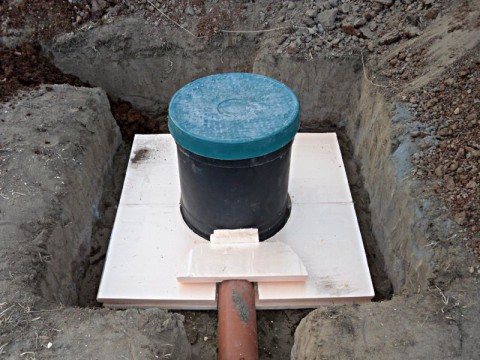

Even one or two layers of expanded polystyrene can be enough to protect the cesspool from freezing.
Do you need insulation?
The question of how to insulate a pumping station for the winter is relevant for any owner of a country house. After all, it is the residents of the private sector who are familiar with the situation when in the early morning in winter not even a drop escapes from the tap instead of the usual jet. Frozen water in a pipeline can be a serious problem. And not just because you can't have your morning coffee or brush your teeth.
From the course of school physics, we remember that water tends to expand when it freezes. If there is water inside the pipe, at the junction or in the pump mechanism itself at the time of severe frost, the tightness of the structure will be broken. As a result, you will be left without a working water supply system, and you will have to spend a lot of money on winter repairs of communications or, even worse, replacing the pumping station.
Therefore, it is important not only to think over the entire communication system in the house and on the site, but also to take care of proper care. In our case, we are talking about timely insulation.
Location and type of cesspool on the site
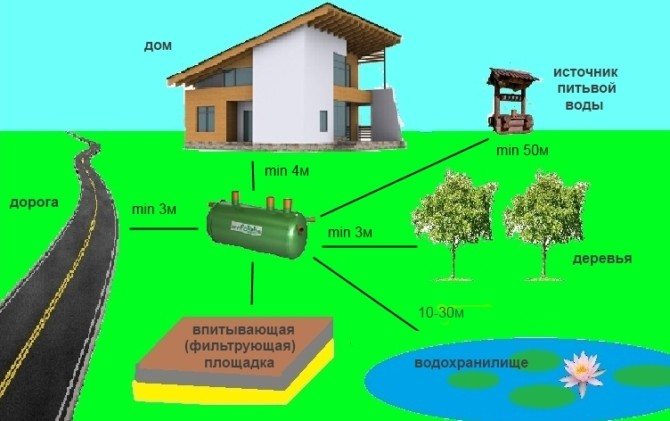

The current sanitary norms and rules establish legal requirements for the location and design type of a cesspool in a personal (summer cottage) plot. In their main points, these norms are simple and consist of several rules:
- the distance from the cesspool (hereinafter - VYa) to the nearest well is at least 20 m, to the central water conduit - 10 m;
- it is impossible to locate the VY closer than 4-6 m to a residential building on the site itself and to houses (capital structures) on neighboring sites;
- to the fence, limiting the territory of home ownership, the VYa must be at least 1 meter and must be in the territory immediately adjacent to the residential building;
- the depth of the VP depends on the characteristics of the soils in the area and the depth of the groundwater, however, it should not be more than 3 meters.
Read also Outdoor flowerpots. Tips for choosing and making your own hands (60 photos)
If flood events are often observed in your area, it is impossible to leave filtration holes in the walls of the cesspool, and it is also advisable to raise the inspection hatch cover to a height sufficient to avoid flooding the hole.
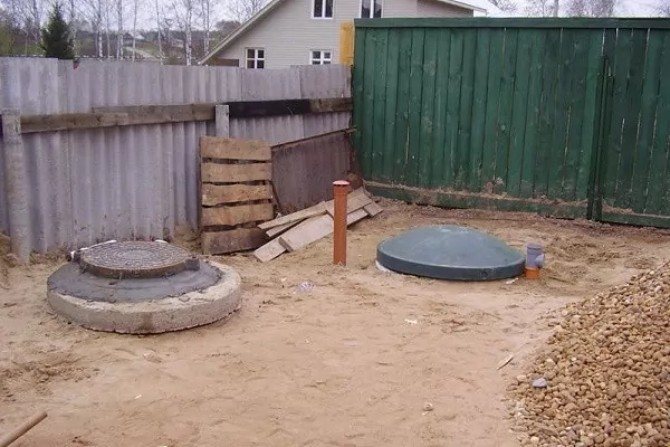

Effective operation of absorbing (filtering) cesspools is possible only in conditions of loose soils with filtering properties. Clay, sandy loam, loam, as well as rocky and semi-rocky rocks cannot be attributed to such soils - you will have to equip a sealed storage pit.
An important and practical advice is to separate the drains and arrange two cesspools on the site at once. One, sealed - for the toilet, it will not fill up so intensively and the frequency of calling the sewer truck is noticeably reduced. The other, absorbing - for showers, washing machines and kitchen sinks: insoluble inclusions in the so-called. There is very little “gray water”, so almost everything is absorbed into the soil.
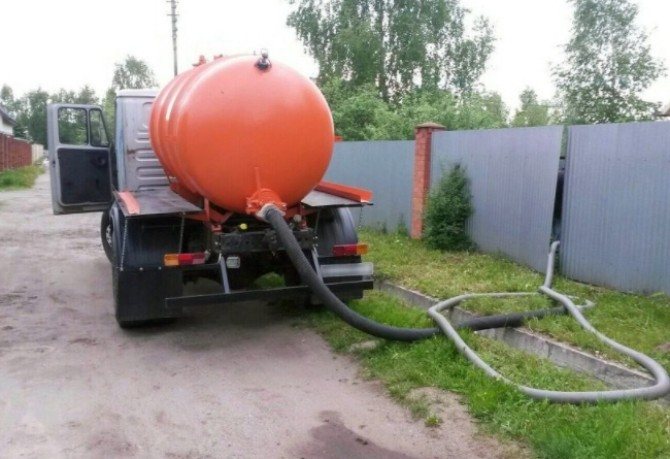

When choosing a place for a cesspool, do not forget to provide for the possibility of a large-sized sewer truck approaching.
The cesspool is frozen: what to do
If for some reason it was not possible to insulate a cesspool in a private house, in winter it is highly likely to freeze. In order not to be left without a functioning sewage system, emergency measures are applied:
- Boiling water and soda ash. With a small thickness of ice, it is quite possible to defrost it with boiling water.The addition of soda ash will increase the effect.
- Reagents for melting ice. The composition of such substances includes salts of sodium, magnesium and calcium, which quickly react with water, forming a liquid solution. It should be noted that the freezing point of such a solution is much lower than that of water.
- Gas torch or blowtorch. You can melt a layer of ice with an open flame. However, in this case, you must be extremely careful not to damage PVC pipes and other elements of the system that are easily melted.
A more difficult problem is the formation of an ice plug in the sewer pipe. If boiling water or reagents will not eliminate the blockage, it is better to seek professional help. Unauthorized attempts can damage the pipe and compromise its tightness.
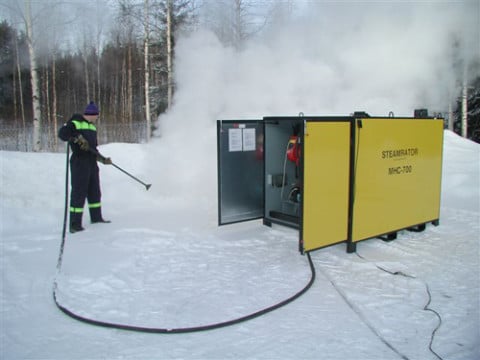

One of the professional ways to defrost the sewage system is to use a steam generator.
For the continuous operation of the sewage system of a private house in winter, it is very important to insulate the cesspool and sewer pipes. In the absence of free time or a desire to engage in such work, it is better to entrust the thermal insulation of the treatment plant to professionals. Having made high-quality insulation once, you will forever forget about the problem of freezing of the home sewage system.
Whether to insulate a septic tank for the winter? Consequences of the lack of insulation
If you do not insulate the septic tank, in the spring you can face a number of problems. The groundwater level rises, which means that a septic tank can simply float in a dug pit. This often happens when they forget about the septic tank in the summer cottages, which are used mainly in the summer. The septic tank weighs a little, which means that the water can push it out without any problems.
Another problem is soil instability. The negative impact of temperature differences, ground movement - all this affects the hull and can lead to its complete physical destruction. It will either burst or deform.
All of the above can happen with an empty septic tank, from which all the drains have been pumped out. There is one more unpleasant consequence - freezing. We are talking about both wastewater and groundwater. If you decide to use the sewage system in the country in the winter (or live in the house all the time), blockages and serious traffic jams are possible. Therefore, maintaining a certain temperature level becomes an absolute necessity. And the insulation of the septic tank for the winter is something that needs to be taken care of in advance.

